×
Warning This page is a 🌱seedling, an unfinished 1st draft. The information is accurate but it has not been finished or edited yet!!
Sun Protection: Sunscreen is #1, but def not the only thing you need to do
First things first, let's define a few basic terms you'll see on this page:- SPF: Sun Protective Factor. It is measured by how much ~☀️UVB radiation☀️~ is needed to burn the skin while wearing 5mL per area compared to unprotected skin. The SPF is dependent on wearing at least 5mL o1 This is NOT HOW LONG YOU CAN STAY IN THE SUN!! (See UV Index below!)
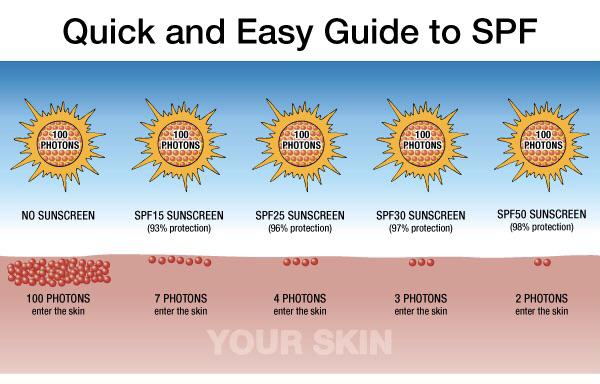
It is related to your skin type and how much sunscreen you put on - if you don't put the recommended amount on (and most people don't), you're NOT getting the advertised level of SPF.1 (PS: a "base tan" gives you an SPF of 3. And that tan is literal dna damage.)
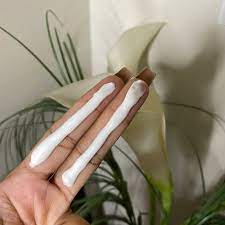
The correct amount of sunscreen is a minimum of this much (~a teaspoon/5mL) per: face/neck, each limb, front of body, back of body.
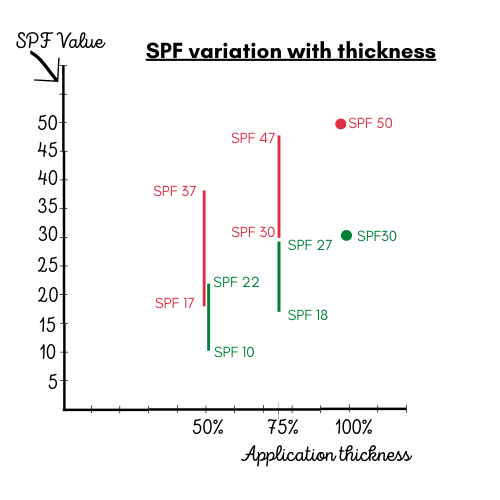
If you only put on 50% of the recommended dose, you are getting a lot less SPF. Which is why it's best to use SPF 50, as when you inevitably underapply (though we all must do our best not to!) you will have more protection than underapplying SPF 30. - Broad Spectrum: Should be a non-negotiable feature of any sunscreen you buy (along with being minimum of SPF 30).2 SPF alone only measures protection against UVB, and will not protect you against UVA radiation! THIS IS BANANAS, because UVA is the worst of the two.
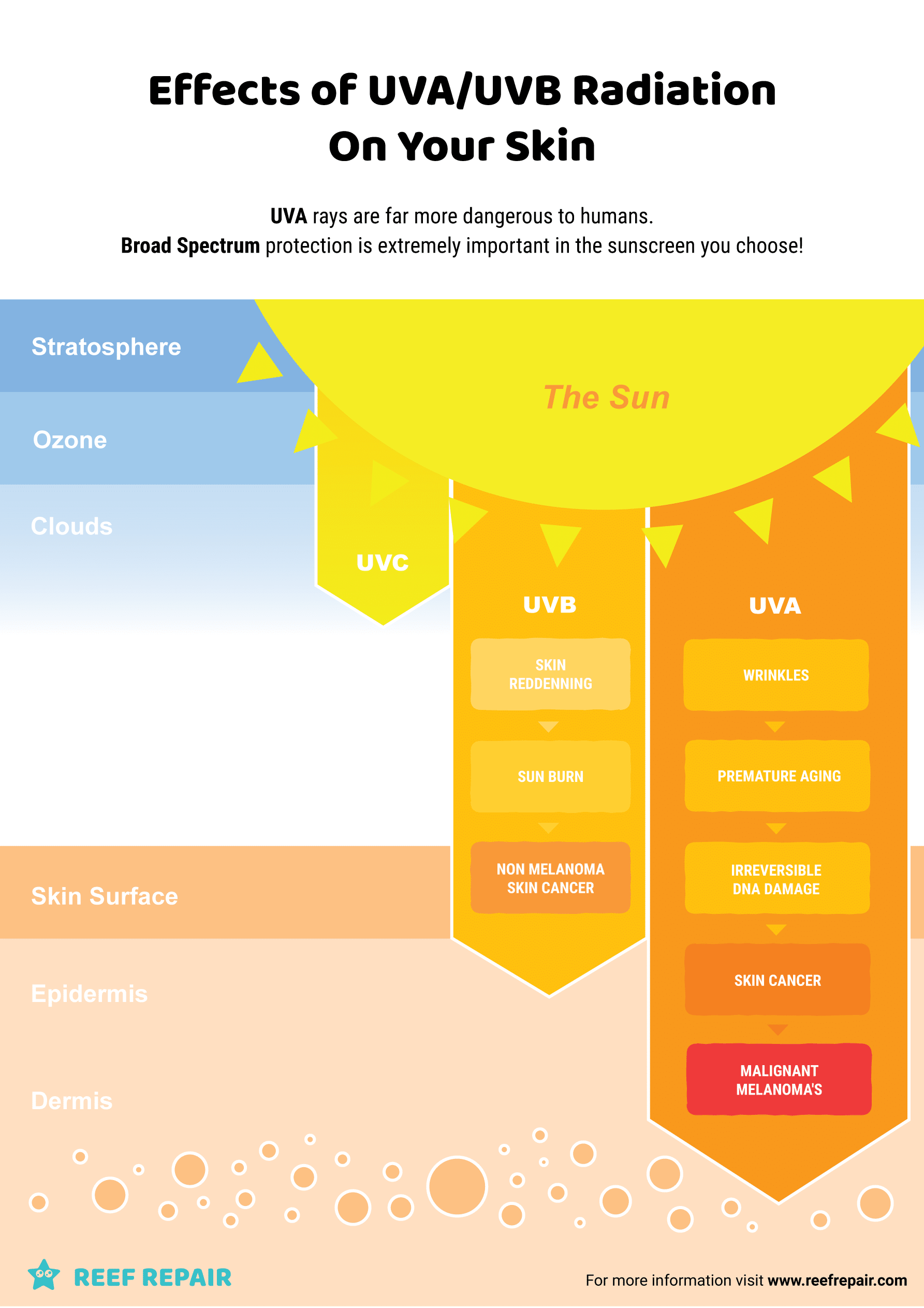
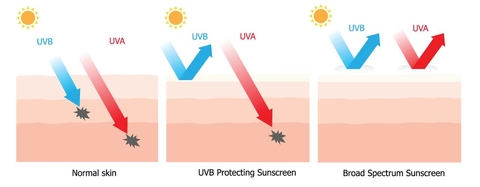
Now, thanks to the FDA regulations, if the product is labeled broad spectrum, it means that the UVA protection is proportional to the UVB protection. The higher the SPF is, the higher the UVA protection will be as well.2
- DNA Damage:
- Melanin:
- UVA: 95% of the radiation that hits Earth is UVA. Unlike UVB, they are equally intense throughout the day, and they go right through glass, clouds, and even fog. They penetrate deep into our skin. UVA isn't as responsible for burns as UVB, but it is the main cause of tanning. Tans are DNA damage (🚨 a cause of cancer!) and lead to premature aging like wrinkles, hyperpigmentation and loss of elasticity, etc. Tanning beds are mostly UVA (mega yikes 😬)2 Scientific understanding of UVA is pretty new, so sunscreens didn't use to protect against it (!!)
- UVB: These are shorter-wavelength rays that don't penetrate as deeply into the skin as UVA, but are responsible for most sunburns and sun redding. (Remember, each sunburn increases your risk of skin cancer- especially as a child). The intensity of UVB varies according to the loction, time of day, weather, etc. They don't get through glass very well.2
- UV Index:
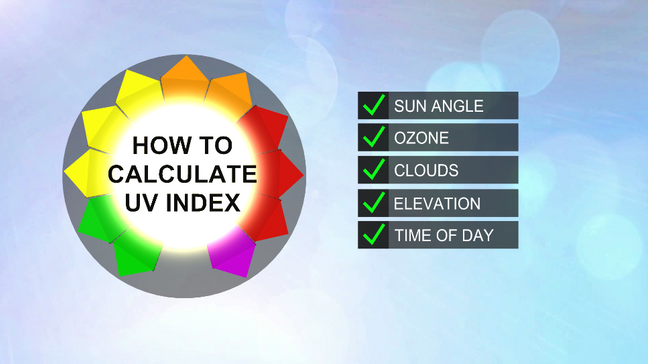
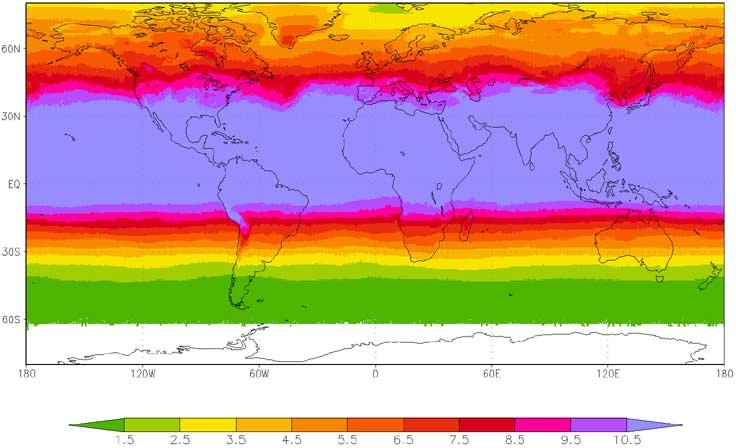
"Global distribution of the clear-sky UV index at local solar noon on June 3, 2005 derived from OMI measurement data."3
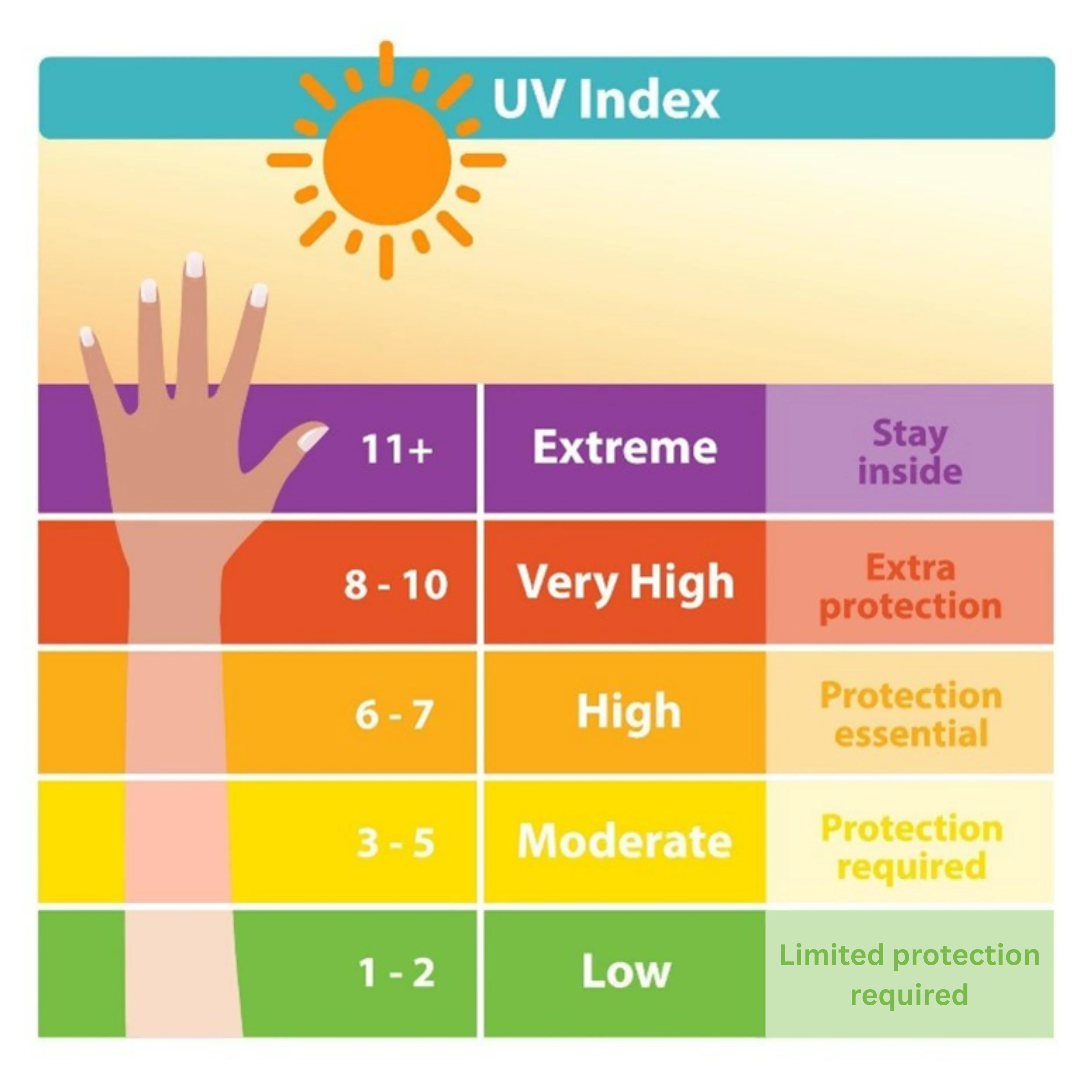
- UV Radiation:

But, if you get nothing else from this page, please know that the absolute minimum SPF you should rely on is SPF 30, but 50 is the best default.
- SPF makeup is a marketing gimick. You'd need to wear THIS MUCH to get the advertised SPF!
- Powder sunscreen is alright for quick touchups for small amounts of sun exposure and absolutely can't be used as main SPF.
- Spray sunscreen is better than nothing, but you will almost certainly not put enough on to get to the advertised SPF. Most of what you spray doesn't even get on your skin, and so you need to be spraying A LOT on!! You'd need a lot of spray even if 100% of the spray got on you.
The sunscreen itself is legit, it's just that it's very very hard to get the right amount so your SPF 50 spray might end up being more like SPF 15. Which is why you absolutely must get the highest SPF possible if you're going to get spray at all. It has it's place, but remember you still need to be getting a tablespoon of the stuff on your face & neck / each limb / each side of your body. That's a lot of spray!!

----------------
- Protectant Factor (SPF) - U.S. Food & Drug Administration (FDA) ↥
- Breaking Down Broad-Spectrum Protection: Why Your Sunscreen Needs to Have it - The Skin Cancer Foundation ↥
- Tanskanen, Aapo & Krotkov, Nickolay & Herman, Jay & Arola, Antti. (2006). Surface ultraviolet irradiance from OMI. Geoscience and Remote Sensing, IEEE Transactions on. 44. 1267 - 1271. 10.1109/TGRS.2005.862203. (Fig 2.) ↥